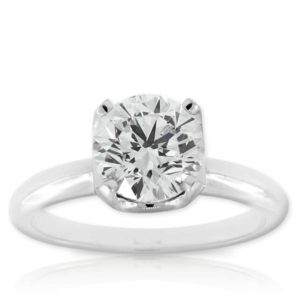
The name is everything, right? What we now know as the ring finger was known, and still is in some languages, as the “nameless” finger. It may be nameless to some, but it is magical to others according to ancient beliefs in many cultures. People in love today don’t need ancient beliefs to consider it magical though, all they need is a wedding ring on their ring finger.
“With this ring I thee wed … This gold and silver I give thee”, at which point you imagine a diamond ring being placed on the left hand. Well, it wasn’t always that way, nor is it always on the left. The quote is from the prayer book of Edward VI and after those words the bride received a leather purse filled with gold and silver coins. The Romans gave the bride two rings, gold to wear in public and an iron ring to wear at home during chores. Later, in 1215, Pope Innocent III started the engagement tradition when he enforced a waiting period between the promise of marriage and the ceremony (although only the rich were allowed to own rings with stones). In Colonial America, a thimble was given to the woman and converted into a ring when the top of the thimble was removed. The first recording of a diamond engagement ring was in 1477 as Maximilian I, Holy Roman Emperor, gave Mary of Burgundy an engagement present of a diamond ring.
In North America and the United Kingdom the ring is usually worn on the left hand. This custom came from ancient Egyptian belief that there is a vein in that finger that connects straight to the heart, which the Romans named “vena amoris” or “vein of love”. It is not the same everywhere; many countries and some religions have opposite beliefs. In Indian tradition, rings aren’t even part of the marriage, although that is changing over time. Traditionally a toe ring is worn by women. Depending on the location, some Indian women have a tradition of an iron bangle which at times is coated in silver or gold for appearance. In some Central European cultures and Orthodox religions the wedding ring is worn on the right hand. Religiously, crossing yourself is done with the right hand, so there is a connection spiritually with that hand. The right hand is also looked at, culturally, as the more dominant hand. Right standing for: correct, strong, loyal and more.
Women aren’t the only ones setting trends and traditions around the world. Men wear engagement rings that later become their wedding bands in several countries like Sri Lanka, Finland, Norway, Brazil and Argentina. Before the Great Depression only about 15% of married men in America wore wedding rings, whereas now it’s 80%. Some are even wearing what has been branded as the “mangagement” ring, just as in other cultures it’s just their wedding band that they put on early.
The “nameless” and “magical” finger is now really starting to sound like the ring finger. Places and times change, yet the eternal circle of love does not. So whatever your ring may look like, whichever hand it may be on and whether you put it on before or after the wedding, is not the point. Love is the final connection between us all.